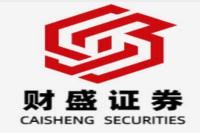Decoding the Central Bank's Monetary Policy Moves: A Deep Dive into Recent Reverse Repo Operations
Meta Description: Understanding the intricacies of China's monetary policy, reverse repo operations, interest rates, and their impact on the economy. Learn about the implications of recent 2926 billion yuan 7-day reverse repo operations and their effect on liquidity, inflation, and economic growth.
Imagine this: You're navigating the complex world of finance, trying to decipher the cryptic pronouncements from central banks. Suddenly, a headline flashes across your screen: "Massive Reverse Repo Operation!" Panic sets in. What does it mean? Will your investments tank? Will your savings evaporate? Don't worry! You're not alone. Many investors find central bank announcements—especially those involving jargon like “reverse repo operations”—confusing and frankly, terrifying. But fear not! This article will demystify the recent 2926 billion yuan 7-day reverse repo operation by the People's Bank of China (PBOC), providing a clear, concise, and insightful analysis you can actually understand. We'll delve deep into its implications for liquidity, inflation, and the overall health of the Chinese economy, equipping you with the knowledge to navigate similar announcements with confidence. We’ll explore the mechanics of reverse repos, examine the context of this specific operation, and speculate on its potential long-term consequences. Get ready to unlock the secrets of monetary policy and become a more informed, empowered investor! This isn't just dry economic theory; it's about understanding the real-world impact on your financial future. So, buckle up and let's dive in! This isn't your grandpappy's economics lesson—we're going beyond the textbook and into the exciting, ever-changing world of global finance! Prepare to be amazed, informed, and maybe even a little bit thrilled by the power of understanding.
Reverse Repo Operations: Understanding the Mechanics
Reverse repo operations are a crucial tool employed by central banks, including the PBOC, to manage liquidity within the banking system. Think of it like this: the central bank essentially borrows money from commercial banks. It does this by offering a temporary investment opportunity – a reverse repo. Banks park their excess reserves with the central bank, earning interest in the process. The rate at which this interest is paid is the reverse repo rate. In essence, it's a short-term borrowing mechanism that influences the overall interest rate environment. This recent 2926 billion yuan injection, at a rate of 1.50%, signifies a significant move by the PBOC.
The impact of this operation is multifaceted. On one hand, it injects substantial liquidity into the banking system, potentially boosting lending and economic activity. This is particularly important during periods of economic slowdown or uncertainty. Conversely, a large-scale injection like this could also be interpreted as a sign that the PBOC is concerned about maintaining sufficient liquidity in the market, potentially indicating some underlying economic weakness. The delicate balance between stimulating growth and controlling inflation is a constant juggling act for central banks worldwide.
This operation is not an isolated event. It's part of a broader monetary policy strategy enacted by the PBOC to manage several key macroeconomic variables. Understanding the context is therefore crucial to interpreting its significance.
The Context of the 2926 Billion Yuan Operation
The timing of this significant reverse repo operation is crucial to its interpretation. Was it a proactive measure to prevent a liquidity crunch? Or a reactive response to some unforeseen economic event? Analyzing the broader economic landscape unveils essential insights. Consider these factors:
- Economic Growth: The Chinese economy, while still growing, has shown signs of slowing down in recent quarters. This move could be aimed at counteracting that slowdown by increasing the money supply and encouraging lending.
- Inflation: Inflation remains a concern for many economies globally, including China. The PBOC needs to carefully balance stimulating growth with managing inflationary pressures. A large injection of liquidity could potentially stoke inflationary fires if not carefully managed.
- Global Economic Uncertainty: Global economic uncertainty, stemming from geopolitical tensions and other factors, can influence the PBOC's decisions. The operation could be a precautionary measure to ensure sufficient liquidity in the face of potential external shocks.
Implications for the Chinese Economy
The 2926 billion yuan injection has far-reaching implications for various sectors of the Chinese economy. The increased liquidity could lead to:
- Increased Lending: Banks, flush with cash, might be more inclined to provide loans to businesses and consumers, potentially stimulating investment and consumption.
- Lower Borrowing Costs: Increased liquidity can potentially lead to lower interest rates, making borrowing cheaper for businesses and individuals. This could incentivize investment and spending.
- Potential Impact on the Yuan: The impact on the Yuan's exchange rate is complex and depends on various factors, including global market trends and investor sentiment. A stronger Yuan could potentially hinder exports, while a weaker Yuan could boost them. This is a double-edged sword that the PBOC constantly monitors.
However, these positive effects are not guaranteed. The effectiveness of the operation depends on several factors, including the overall health of the banking sector, the willingness of banks to lend, and the response of businesses and consumers to the increased liquidity.
Monitoring the Market's Response
It's absolutely crucial to monitor the market's response to this significant injection of liquidity. Key indicators to watch include:
- Interbank Lending Rates: Observe how interbank lending rates react to this operation. A significant drop in these rates would indicate that the operation was successful in injecting liquidity into the system.
- Stock Market Performance: The stock market's reaction can provide insights into investor sentiment and confidence in the economy's future prospects.
- Consumer Spending and Business Investment: Monitor consumer spending and business investment levels to gauge the effectiveness of the liquidity injection in stimulating economic activity.
Sustained observation of these indicators will provide a clearer picture of the long-term impact of this operation on the Chinese economy.
Frequently Asked Questions (FAQs)
Q1: What is a reverse repo operation?
A1: In simple terms, a reverse repo is when a central bank borrows money from commercial banks, offering them a short-term investment opportunity and paying them interest. It's a tool used to manage liquidity in the banking system.
Q2: Why did the PBOC conduct such a large reverse repo operation?
A2: The reasons are multifaceted, potentially including a desire to boost economic activity, address potential liquidity shortages, or counter economic slowdown. It's part of a broader monetary policy strategy.
Q3: What are the potential risks of such a large liquidity injection?
A3: A major risk is increased inflation. Too much liquidity in the system can drive up prices. The PBOC needs to carefully balance stimulating growth with managing inflation.
Q4: How does this affect the average person in China?
A4: Indirectly, it could influence interest rates on loans, affecting borrowing costs for mortgages, car loans, and business loans. It could also impact the overall economic climate, affecting job opportunities and investment returns.
Q5: What other monetary policy tools does the PBOC use?
A5: The PBOC utilizes a range of tools, including interest rate adjustments, reserve requirement ratios, and open market operations, to manage the money supply and achieve its economic objectives.
Q6: Where can I find more information on PBOC announcements?
A6: The official website of the People's Bank of China (PBOC) is the best source for official announcements and press releases regarding their monetary policy actions. You can also follow reputable financial news sources for analysis and commentary on these announcements.
Conclusion: Navigating the Complexities of Monetary Policy
The recent 2926 billion yuan 7-day reverse repo operation by the PBOC is a significant event with far-reaching implications for the Chinese economy. Understanding the mechanics of reverse repo operations, the context in which this operation occurred, and its potential impacts is crucial for anyone following the Chinese economy or investing in Chinese assets. While the immediate effects might not be immediately apparent, careful monitoring of key economic indicators will provide a clearer picture of its long-term consequences. By understanding these complex financial maneuvers, we can better navigate the ever-evolving world of global finance and make more informed decisions about our financial future. Remember, staying informed is key to financial success! Don't be afraid to ask questions and continue learning – your financial well-being depends on it!



